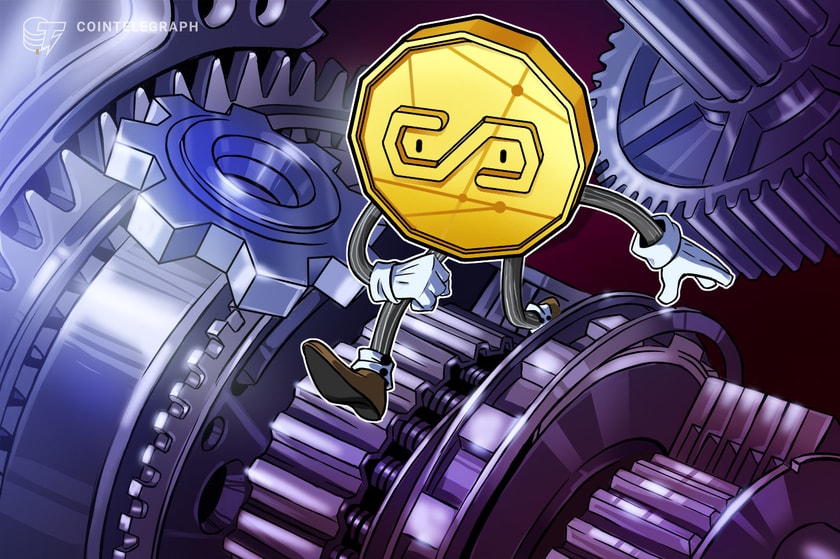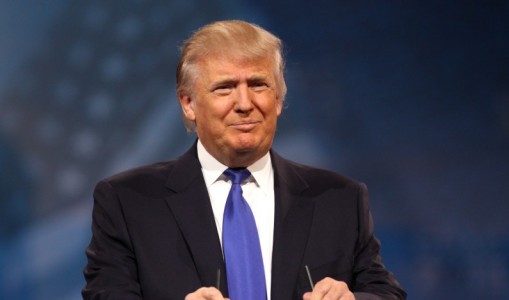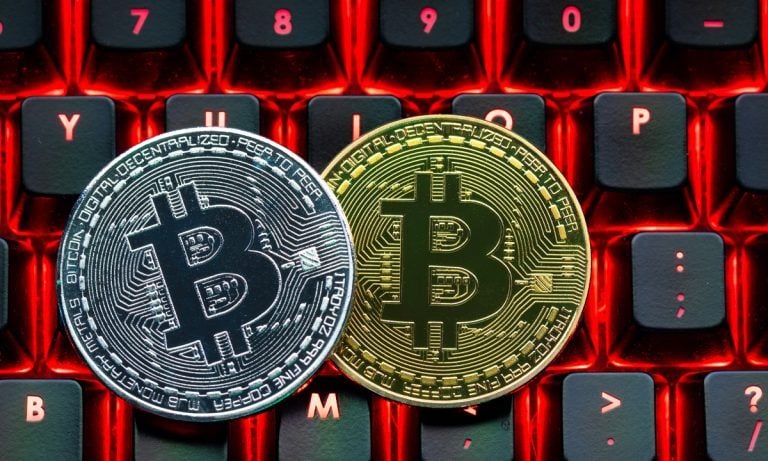Stablecoin exodus: Why are investors fleeing crypto’s safe haven?

Stablecoins have seen a 17-month decline as investors move to traditional assets. What needs to happen for the exodus to stop?
In a year filled with uncertainty in the cryptocurrency space, a new trend has been unraveling: a stablecoin exodus that has now lasted for 18 consecutive months and has seen the market dominance of stablecoins drop to 11.6%.
According to a report from CCData, the total market capitalization of the stablecoin sector in July was $124 billion amid a 18-month decline that affected most major stablecoins. While Pax Dollar (USDP), USD Coin (USDC) and Binance USD (BUSD) all saw declines, the largest stablecoin by market cap, Tether (USDT), has kept on growing.
Stablecoins are a class of cryptocurrencies that attempt to maintain price stability through a variety of methods. Most leading stablecoins are backed by fiat currencies, although others are backed by cryptocurrencies or commodities, or are based on algorithms.
The reasons behind the recent exodus aren’t entirely clear and could be multifaceted.
The suspension of fiat currency deposits on Binance.US following a lawsuit from the United States Securities and Exchange Commission alongside MakerDAO’s move to drop USDP from its reserves as it failed to accrue additional revenue impacted the sector.
Stablecoin trading volumes rose 10.9% to $406 billion in August, but activity on centralized exchanges is struggling, with overall trading volumes “on track” to continue to decline in September, per the CCData report.

CCData’s report points to the SEC lawsuits against leading cryptocurrency exchanges Binance and Coinbase and the race to list a spot Bitcoin (BTC) exchange-traded fund (ETF) as factors contributing to the increase in stablecoin trading volumes.
These factors suggest stablecoins are still acting as safe havens for investors, meaning the exodus could be related to other factors, such as investors cashing out their stablecoins to buy traditional assets as they exit the cryptocurrency space or to take advantage of rising yields in fixed-income securities.
The yield on 10-year U.S. Treasurys, for example, has been surging as the Federal Reserve raises interest rates in a bid to curb inflation. While the yield on these notes was at one point below 0.4% in 2020, it’s now at 4.25%.
Kadan Stadelmann, chief technology officer of blockchain platform Komodo, told Cointelegraph that one of the reasons investors are buying Treasury bills is the “greater certainty behind them.” Even though governments “like the U.S. might face significant debt trouble, they are still considered to be stable by the vast majority of people.” Stadelmann added:
“Meanwhile, stablecoins are perceived as riskier because the crypto market is still largely unregulated. Additionally, stablecoin returns aren’t fully guaranteed. This means if interest rates are comparable between both options, investors are more likely to choose T-bills over stablecoins.”
Digging deeper, the drop in the market capitalization of the stablecoin sector could significantly influence the broader cryptocurrency market. Stablecoins are often used as a medium of exchange and a store of value in crypto transactions, meaning that if demand for stablecoins decreases, it could reduce the liquidity and efficiency of the crypto market as a whole.
Circulating stablecoin supply exploded long-term
While the total market capitalization of the stablecoin sector has been declining for 16 consecutive months, CCData’s report detailed that trading volumes have not suffered the same fate.
Speaking to Cointelegraph, Becky Sarwate, head of communications at cryptocurrency trading platform CEX.IO, pointed to several changes in the stablecoin sector, including USDT’s rise and a slight drop seen in August, that have historical precedent and demonstrate an increase in demand.
Magazine: ‘AI has killed the industry’: EasyTranslate boss on adapting to change
Sarwate noted that several projects experienced “noticeable fluctuations this year,” with USDC, for example, depegging following the collapse of Silicon Valley Bank in March after it was revealed Circle had $3.3 billion stuck in the financial institution. She said this “likely set the table for Binance to pivot its holdings from the stablecoin into BTC and ETH.” Sarwate added:
“At the same time, USDC’s ubiquity in the DeFi space has long nudged other stablecoins like Dai to the periphery due to its overcollateralization requirements.”
She also pointed out that Binance’s flagship stablecoin, BUSD, has continued declining after Paxos was forced to stop issuing new tokens. Binance has since adopted TrueUSD (TUSD) and First Digital USD (FDUSD), which “both saw increased market capitalization of roughly 240% and 1,950%, respectively, in 2023.”
Thomas Perfumo, head of strategy at cryptocurrency exchange Kraken, told Cointelegraph that the market capitalization for stablecoins “corresponds with market demand,” adding:
“Over the last three-and-a-half years, circulating stablecoin supply has grown from ~$5 billion to ~$115 billion, signaling a massive growth given the attractiveness of hedging volatility and the flexibility of global, 24/7 transferability.”
Peli Wang, co-founder and chief operations officer of Bracket Labs — a decentralized finance options exchange — noted that leading stablecoins USDT and USDC registered a 23% drop in their market capitalization from June 2022 to September 2023, compared with the 66% drop from $3 trillion to around $1 trillion the cryptocurrency space suffered from November 2021 to September 2023.
To Wang, many cryptocurrency investors are “highly opportunistic in the sense that they follow where the yield is going.” After taking advantage of better yield opportunities in crypto when traditional finance had low interest rates, they are now moving to traditional finance as its rates have increased.
Following the yield
Wang isn’t alone in this analysis: Kraken’s Perfumo told Cointelegraph that it’s “possible that the decline in stablecoin supply is related to the attractiveness of other cash equivalents that earn higher interest, including government bonds.”
Perfumo added that the Federal Deposit Insurance Corporation has reported U.S. banks lost more deposits “than any time in the last four decades” amid rising yields, presumably as the funds are moved to Treasurys or money market funds offering better yields.
Pegah Soltani, head of payments products at fintech firm Ripple, told Cointelegraph that back in 2020, when interest rates in traditional finance were low, there were “little opportunity costs of holding money in non-yielding stablecoins because Treasurys and other fixed income securities yield near 0%.”
As interest rates rose, Soltani added, holding onto stablecoins over yield-bearing instruments became less attractive:
“Now that Treasurys are +5%, there are real costs to holding assets in stablecoins over Treasurys. Risk is a more obvious factor, but economic dynamics are likely playing a bigger role in market capitalization highs and lows.”
To CEX.IO’s Sarwate, there’s “no question” that higher interest rates made traditional finance more attractive to investors seeking fixed income. Stablecoin adoption, she added, was initially a “convenient on-ramp for crypto-curious participants to access more advanced services in the digital economy.”
Tokenized fiat currency
2023 saw major stablecoins USDC and USDT depeg at some point, which wobbled investor confidence. Pairing this with the recent collapse of cryptocurrency exchange FTX and of the Terra ecosystem — which included an algorithmic stablecoin that lost nearly all of its value — it becomes clear the stablecoin market has faced serious challenges that remain fresh in the minds of many industry participants.
Sarwate concluded that these industry participants want to feel secure while seeing their investments grow, which means that until stablecoins can “meaningfully address these two concerns, we’ll likely continue to see underwhelming or lackluster performance for this specific use case.”
On whether the move to fixed-income securities was temporary or indicative of a long-term trend, Soltani told Cointelegraph that tokenized assets like fiat currencies have “greater utility over nontokenized ones,” especially if issued on high-performance blockchains:
“Tokenized fiat is the future — whether it’s issued by a bank, Circle, Tether or others still remains to be seen. Whether it be in the short-term or long-term, the move to Treasurys is indicative of economic and regulatory success.”
If stablecoins offered the same yields as Treasurys while remaining just as compliant, she added, many cryptocurrency users would likely want to hold their assets in stablecoins, which are easier to move and trade.
Put simply, the incentive to hold stablecoins has seemingly been dropping, while the incentive to hold cash and other fixed-income securities in traditional finance has been growing.
Could PayPal’s stablecoin turn things around?
In August, global payments giant PayPal unveiled a new stablecoin called PayPal USD (PYUSD), an Ethereum-based, U.S. dollar-pegged stablecoin issued by Paxos and fully backed by U.S. dollar deposits, short-term Treasurys and other cash equivalents.
Today, we’re unveiling a new stablecoin, PayPal USD (PYUSD). It’s designed for payments and is backed by highly liquid and secure assets. Starting today and rolling out in the next few weeks, you’ll be able to buy, sell, hold and transfer PYUSD. Learn more https://t.co/53RRBhmNHx pic.twitter.com/53ur2KmjU7
— PayPal (@PayPal) August 7, 2023
The stablecoin is the first one carrying the weight of a major U.S. financial institution, which could potentially boost investors’ confidence in it. Others, as CEX.IO’s Sarwate pointed out, are weary of its centralized nature and have raised concerns over some controversial features it has, including address-freezing and fund-wiping.
Sarwate added that there are “many who view such overarching control as being antithetical to crypto’s promise,” something that, to her, could explain why PYUSD has struggled to gain traction so far.
PayPal’s stablecoin could nevertheless help the sector recover, even if by bringing in new users who had never used cryptocurrency before. Speaking to Cointelegraph, Erik Anderson, senior research analyst at ETF firm Global X, suggested PYUSD could be lowering the barrier of entry for crypto:
“We believe PayPal’s launch has the potential to make the technology feel more accessible and less intimidating to a massive user base (approximately 430 million-plus active users), which can be a great thing for adoption.”
Sarwate seemingly agreed with the assessment, saying that PayPal’s name being behind a stablecoin could “be a selling point for newcomers to the space and help establish PYUSD as a gateway crypto.”
Recent: Redefining money: America’s digital currency dilemma
Ripple’s Soltani echoed the sentiment, saying that if the stablecoin is listed and available in the broader cryptocurrency ecosystem while being accepted by merchants working with Tether, it can “create material inflow to stablecoins and significantly change existing market shares.”
To Soltani, the stablecoin market will naturally “consolidate down to a few trusted names,” as otherwise “liquidity would be too fragmented.”
At the end of the day, it appears the stablecoin exodus is caused by a relatively stable cryptocurrency market and a flight to yield-bearing assets that investors feel safe holding onto while the cryptocurrency market consolidates.
Whether stablecoins will start offering exposure to yield coming from the fixed-income securities backing them or whether the on- and off-ramps will become so seamless and efficient that the market will begin to fluctuate heavily remains to be seen.









